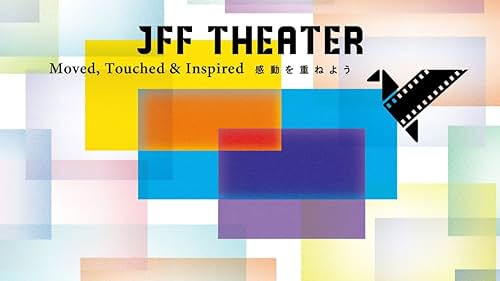
Films about filmmaking always scratch a very specific itch, exploring the various ups and downs that go into any given project. This is the subject of director Sôshi Masumoto’s debut feature, “It’s a Summer Film!”, in which he celebrates cinema’s history and ponders its future, although not without some major narrative hiccups.
Time of Eve is streaming on Jff Theater
High-schooler Barefoot (Marika Ito) is a lover of cinema. She and her friends adore classic samurai flicks and dream of making a similar film of their own. Unfortunately, the school Film Club has already decided to fund the clichéd rom-com “I Can’t Help Loving You,” directed by resident ‘it girl’, Karin (Mahiru Koda). However, when Barefoot finds the perfect samurai lead for her script in the mysterious Rintaro (Daichi Kaneko), she pulls together an unlikely crew and sets out to make “Samurai Spring”.
Following Barefoot’s endeavours...
Time of Eve is streaming on Jff Theater
High-schooler Barefoot (Marika Ito) is a lover of cinema. She and her friends adore classic samurai flicks and dream of making a similar film of their own. Unfortunately, the school Film Club has already decided to fund the clichéd rom-com “I Can’t Help Loving You,” directed by resident ‘it girl’, Karin (Mahiru Koda). However, when Barefoot finds the perfect samurai lead for her script in the mysterious Rintaro (Daichi Kaneko), she pulls together an unlikely crew and sets out to make “Samurai Spring”.
Following Barefoot’s endeavours...
- 9/2/2024
- by Tom Wilmot
- AsianMoviePulse

Last month the world saw the last episode of FX’s Shōgun, the massively successful historical drama about powerful samurai’s battle for power. It has clearly rekindled people’s interest in the Japanese traditional samurai movies of the 20th century.
Here are 6 of the most worth-watching genre’s staples for all fans of Shōgun.
Seven Samurai (1954)
Akira Kurosawa's masterpiece is probably the first film that comes to mind to all cinephiles in this respect. The tale of a ronin tasked with gathering a group of samurai to defend a village from criminals, perfectly balancing between action and character development, was the one that paved the way for other samurai movies.
The Throne of Blood (1957)
Here comes another Kurosawa’s work, appearing to be an Asian twist on the Shakespearen story of Macbeth. Following a warrior who assassinates his sovereign at the urging of his wife, it has become...
Here are 6 of the most worth-watching genre’s staples for all fans of Shōgun.
Seven Samurai (1954)
Akira Kurosawa's masterpiece is probably the first film that comes to mind to all cinephiles in this respect. The tale of a ronin tasked with gathering a group of samurai to defend a village from criminals, perfectly balancing between action and character development, was the one that paved the way for other samurai movies.
The Throne of Blood (1957)
Here comes another Kurosawa’s work, appearing to be an Asian twist on the Shakespearen story of Macbeth. Following a warrior who assassinates his sovereign at the urging of his wife, it has become...
- 5/10/2024
- by [email protected] (Ava Raxa)
- STartefacts.com
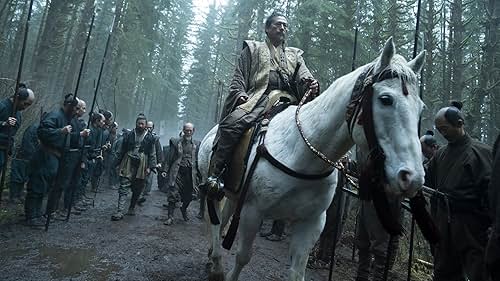
“Why is it that only those who have never fought in a battle are so eager to be in one?” Yoshii Toranaga (Hiroyuki Sanada) asks at one point in FX’s Shōgun. It’s a question that resonates not only with the show’s characters but may strike at the heart of our long-standing fascination with samurai.
Its resonance is all the more profound because Shōgun is loosely — very loosely — based on real events from the end of Japan’s Warring States period that pushed the nation into a new era. Taking historical events and crafting drama from them is something the show has in common with many Chanbara or samurai films. The riveting and often bloody history has provided fodder for countless films, including Hiroshi Inagaki’s Samurai trilogy, Sekigahara, Samurai Assassin, and The 47 Ronin.
However, these narrative films can obscure the complex history behind the events. Fortunately,...
Its resonance is all the more profound because Shōgun is loosely — very loosely — based on real events from the end of Japan’s Warring States period that pushed the nation into a new era. Taking historical events and crafting drama from them is something the show has in common with many Chanbara or samurai films. The riveting and often bloody history has provided fodder for countless films, including Hiroshi Inagaki’s Samurai trilogy, Sekigahara, Samurai Assassin, and The 47 Ronin.
However, these narrative films can obscure the complex history behind the events. Fortunately,...
- 4/23/2024
- by Alec Bojalad
- Den of Geek
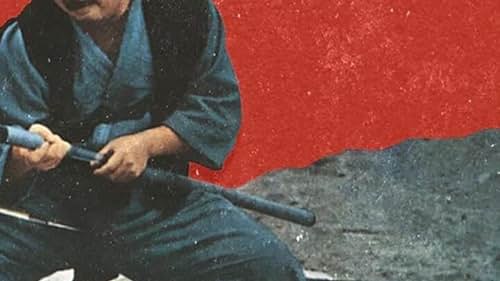
Three years before his career-defining role as Itto Ogami in the six Lone Wolf and Cub films, Wakayama Tomisaburô starred in a trio of films about doctor, bounty hunter, and sometimes shogun assassin Ichibei Shikoro. Where the Lone Wolf and Cub series leaned much harder into the strategies associated with the exploitation filmmaking movement that was booming in Japan during the early 1970s, the “Bounty Hunter” trilogy has both feet firmly planted in the 1960s, drawing influence from James Bond films and spaghetti westerns as well more violent contemporaneous samurai films such as Okamoto Kihachi’s Sword of Doom and Kill!
The influence of the 007 films on Killer’s Mission, from 1969, alone is evident right out of the gate, both in Yagi Masao’s score and our first glimpse of Ichibei preparing his gadgets, including a cane sword and a miniature crossbow, as he readies himself for his mission to prevent an enemy,...
The influence of the 007 films on Killer’s Mission, from 1969, alone is evident right out of the gate, both in Yagi Masao’s score and our first glimpse of Ichibei preparing his gadgets, including a cane sword and a miniature crossbow, as he readies himself for his mission to prevent an enemy,...
- 4/22/2024
- by Derek Smith
- Slant Magazine

“Battle Cry” is a very interesting film for Kihachi Okamoto. Considering that his most famous works in the beginning of the 60s, “Samurai Assassin” and “The Sword of Doom”, even though were critical of Bushido, were also chanbara epics, the fact that later in his career, he decided to mock the exact concept, comes as a surprise, particularly because he seems to mock his filmic past. Atg was the place to do so at the time, and after “The Human Bullet” which satirized WW2, Okamoto came up with “Battle Cry”, which does the same thing with the military phase of the Meiji Restoration of 1868.
Follow our coverage of Art Theatre Guild by clicking on the image below
The movie begins with a narrator that talks about a thug with a penis like a horse, instigating that this will be his story. The person in question is Sentaro, and as the movie begins,...
Follow our coverage of Art Theatre Guild by clicking on the image below
The movie begins with a narrator that talks about a thug with a penis like a horse, instigating that this will be his story. The person in question is Sentaro, and as the movie begins,...
- 8/30/2023
- by Panos Kotzathanasis
- AsianMoviePulse


New York Film Festival stalwart Jim Jarmusch is the 61st New York Film Festival poster designer Photo: Anne-Katrin Titze
Film at Lincoln Center has announced that Jim Jarmusch is the designer of the 61st New York Film Festival poster with an “image of film star Yûzô Kayama.” Jim’s films that have screened at the New York Film Festival are Stranger Than Paradise (1984); Down By Law; ]Mystery Train (1989); Night On Earth (1991); Dead Man (1999); Broken Flowers (2005); Only Lovers Left Alive (2013), and Gimme Danger and Paterson (2016). Earlier it was announced that Sofia Coppola’s Priscilla, a portrait of Elvis Presley’s (Jacob Elordi) wife, born Priscilla Ann Wagner (Cailee Spaeny) will be the Centerpiece selection of the festival. Todd Haynes’s May December, starring Natalie Portman, Julianne Moore, and Charles Melton will be the Opening Night selection and Michael Mann’s...
Film at Lincoln Center has announced that Jim Jarmusch is the designer of the 61st New York Film Festival poster with an “image of film star Yûzô Kayama.” Jim’s films that have screened at the New York Film Festival are Stranger Than Paradise (1984); Down By Law; ]Mystery Train (1989); Night On Earth (1991); Dead Man (1999); Broken Flowers (2005); Only Lovers Left Alive (2013), and Gimme Danger and Paterson (2016). Earlier it was announced that Sofia Coppola’s Priscilla, a portrait of Elvis Presley’s (Jacob Elordi) wife, born Priscilla Ann Wagner (Cailee Spaeny) will be the Centerpiece selection of the festival. Todd Haynes’s May December, starring Natalie Portman, Julianne Moore, and Charles Melton will be the Opening Night selection and Michael Mann’s...
- 8/11/2023
- by Anne-Katrin Titze
- eyeforfilm.co.uk
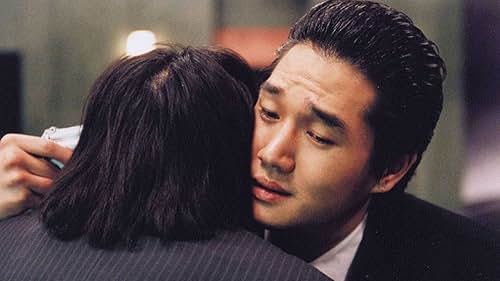
In the realms of Asian cinema, where fascination and sadism frequently intertwine, the existence of a legion of unforgettable villains is not exactly a surprise. Menacing yakuza bosses, cruel moguls, serial killers, vengeful parents, trigger happy crime lords and rogue samurais among others have casted their sinister shadows and have left an indelible mark on the silver screen. With their complex motivations, chilling charisma, and uncanny ability to evoke both fear and fascination, these 30 villains have become iconic figures, embodying the depths of human malevolence. Join us as we delve into their twisted minds and explore the mesmerizing realm of Asian cinema's most unforgettable antagonists.
Without further ado, here are 30 of the most iconic villains ever to appear on Asian cinema, in random order.
1. Lee Woo-jin
The case of Lee Woo-jin in “Oldboy” shows the futility of revenge as an action for a man that could do so much with what he had,...
Without further ado, here are 30 of the most iconic villains ever to appear on Asian cinema, in random order.
1. Lee Woo-jin
The case of Lee Woo-jin in “Oldboy” shows the futility of revenge as an action for a man that could do so much with what he had,...
- 7/12/2023
- by AMP Group
- AsianMoviePulse
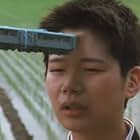

The world of Japanese cinema is one of the most acclaimed and beloved. This video examines many of the classics, the most essential films ever made in Japan or by Japanese filmmakers. Why is the appreciation of Japanese cinema so enduring? "Narrator Luiza Liz Bond emphasized the 'heightened aesthetic sensibility' of Japanese filmmakers, on display in 'the tender observation of Ozu's Tokyo Story, the poetic rhapsody of Kurosawa's Dreams, the harrowing feminine gaze of Videophobia." The video essay is split into different chapters covering different styles of films: Bushidō, Wabi-Sabi, Mono No Aware, Yūgen, Guro, and Hen. Many all-timer films are featured including The Sword of Doom, Seven Samurai, Hausu, Tetsuo: The Iron Man, Tampopo, Love Exposure, Sansho the Bailiff, Tokyo Sonata + many more. Discover films below. // Continue Reading ›...
- 3/31/2023
- by Alex Billington
- firstshowing.net
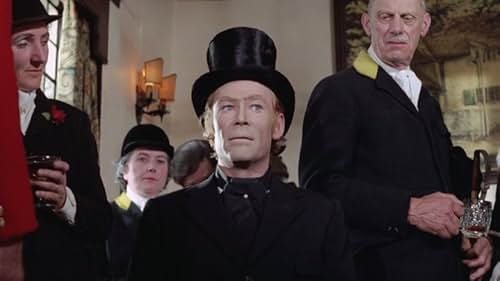
Peter O'Toole's acting career spanned seven decades and involved hundreds of roles, a million sardonic smirks, and no small amount of liquor. On screen, O'Toole could be heroic, villainous, affable, and off-putting, sometimes all at once. In interviews, O'Toole was frank and unguarded, quick with a jibe, and unwilling to suffer fools. O'Toole and his frequent collaborator, the actor Richard Harris, have both appeared on many talk shows toward the ends of their lives to tell many, many stories of getting drunk together.
Somewhere along the way, O'Toole garnered enough fame and clout to more or less select any project he wanted. By the time he starred in Peter Medak's "The Ruling Class" in 1972, O'Toole had already appeared in 18 feature films, including a James Bond movie. That same year, O'Toole would appear in "Under Milk Wood" and a film adaptation of "Man of La Mancha." One might say...
Somewhere along the way, O'Toole garnered enough fame and clout to more or less select any project he wanted. By the time he starred in Peter Medak's "The Ruling Class" in 1972, O'Toole had already appeared in 18 feature films, including a James Bond movie. That same year, O'Toole would appear in "Under Milk Wood" and a film adaptation of "Man of La Mancha." One might say...
- 9/9/2022
- by Witney Seibold
- Slash Film

While the chambara genre is generally associated with the likes of Akira Kurosawa and many others, the name of director Kihachi Okamoto is mentioned only occasionally, even though he probably made some of the most important entries into the genre. With titles such as “Seven Samurai” and “Rashomon” being associated with the samurai film, Okamoto would add a unique spin to the genre with often acidic and laconic humor or a world view which reflects the dark times his home country had to go through at the time his features were made. Some of his most influential works include “The Sword of Doom”, “The Human Bullet” and “Zatoichi Meets Yojimbo”, his entry into the popular “Zatoichi”-franchise, whereas his 1968 feature “Kill!” perhaps best sums up what constitutes Okamoto’s cinema.
Kill! is screening at Japan Society
In 1833 two men, Genta (Tatsuya Nakadai) and Hanjiro (Etsushi Takahashi) arrive in the town of Joshu.
Kill! is screening at Japan Society
In 1833 two men, Genta (Tatsuya Nakadai) and Hanjiro (Etsushi Takahashi) arrive in the town of Joshu.
- 8/26/2022
- by Rouven Linnarz
- AsianMoviePulse
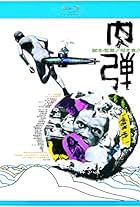

Although mostly known to the West for his samurai films, “Samurai Assassin” and “The Sword of Doom” among others, Kihachi Okamoto’s more than 40 long filmography also includes a cooperation with the Art Theatre Guild, in an anti-war satire that is as antithetical to the Toho’s commercially successful star-studded war epic “Japan’s Longest Day as possible.
Buy
“The Human Bullet” focuses on an unnamed soldier mentioned as Him, who undergoes a rather unusual trip from his training to his visit to various locations around the base, including a second-hand bookstore, the desert, and a village filled of prostitutes, before he is send off to serve his country as a Human Bullet, which is how the film refers to the Kamikazis.
Following a scene where Him is the only one training naked in explosives, the story then shows how this absurd event came to be, through a scene that might...
Buy
“The Human Bullet” focuses on an unnamed soldier mentioned as Him, who undergoes a rather unusual trip from his training to his visit to various locations around the base, including a second-hand bookstore, the desert, and a village filled of prostitutes, before he is send off to serve his country as a Human Bullet, which is how the film refers to the Kamikazis.
Following a scene where Him is the only one training naked in explosives, the story then shows how this absurd event came to be, through a scene that might...
- 3/6/2022
- by Panos Kotzathanasis
- AsianMoviePulse

Alexandre Koberidze's What Do We See When We Look at the Sky? is showing exclusively on Mubi in many countries starting January 7, 2022 in the series The New Auteurs.Inspiration #1“Don’t Cry for Me Argentina” by Sinead O'ConnorListening and watching Sinéad O'Connor singing” Don't Cry for Me Argentina” is one of the most beautiful experiences I ever had. While writing the script, while preparing the film, I was often watching it. I think a wish to make a film as gentle, careful, and at the same time as overwhelming as this performance will follow me for many years. Inspiration #2A scene Three Days of Hot Summer (1981)by Merab Kokochashvili The character played by Kakhi Kavsadze is an archeologist. Late at night during a heavy rainstorm he wants to go to his worksite because it might be raining there too and he wants to cover it up."You're crazy," his wife says,...
- 1/5/2022
- MUBI
Perhaps it is one of the great ironies in the career of Japanese director Kihachi Okamoto that a film he was forced to do was going to be his most memorable one. In a filmography consisting of titles such as “Samurai Assassin” (1965), “Kill!” (1968) and “The Human Bullet” (1968), the director’s 1966-film “The Sword of Doom” stands out as one of the bleakest jidaigeki movies. Based on the novel “Daibosatsu toge” by Kaizan Nakazato, which had already inspired many adaptations, for example, one by “Lone Wolf and Cub”-director Kenji Misumi, Kihachi Okamoto made a film which reflected the trends of the Japanese film industry of that time but is also one of the most interesting portrayals of a man, a world consumed by violence and madness.
At the center of the film, we have Ryunosuke Tsukue (Tatsuya Nakadai), a master swordsman wandering the country, and his life...
At the center of the film, we have Ryunosuke Tsukue (Tatsuya Nakadai), a master swordsman wandering the country, and his life...
- 10/29/2019
- by Rouven Linnarz
- AsianMoviePulse
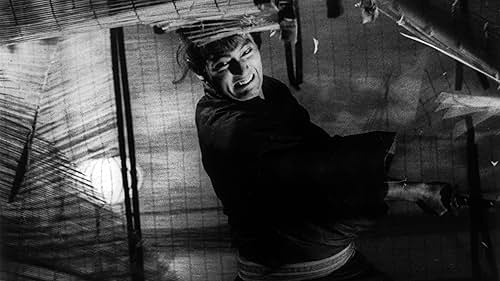
Tatsuya Nakadai, one of Japan's greatest actors who worked with several of the country's most notable filmmakers, is set to receive the lifetime achievement award at the Tokyo International Film Festival.
An icon of Japanese cinema, Nakadai's seven-decade-long career has seen him star in films that have become part of the cultural fabric in Japan and proved hugely influential internationally.
Nakadai worked with several of Japan's best-ever filmmakers, including Hiroshi Teshigahara (The Face of Another), Mikio Naruse (When a Woman Ascends the Stairs), Kihachi Okamoto (Kill! and The Sword of Doom), Hideo Gosha (Goyokin), Shirō ...
An icon of Japanese cinema, Nakadai's seven-decade-long career has seen him star in films that have become part of the cultural fabric in Japan and proved hugely influential internationally.
Nakadai worked with several of Japan's best-ever filmmakers, including Hiroshi Teshigahara (The Face of Another), Mikio Naruse (When a Woman Ascends the Stairs), Kihachi Okamoto (Kill! and The Sword of Doom), Hideo Gosha (Goyokin), Shirō ...
- 10/25/2019
- The Hollywood Reporter - Film + TV

Tatsuya Nakadai, one of Japan's greatest actors who worked with several of the country's most notable filmmakers, is set to receive the lifetime achievement award at the Tokyo International Film Festival.
An icon of Japanese cinema, Nakadai's seven-decade-long career has seen him star in films that have become part of the cultural fabric in Japan and proved hugely influential internationally.
Nakadai worked with several of Japan's best-ever filmmakers, including Hiroshi Teshigahara (The Face of Another), Mikio Naruse (When a Woman Ascends the Stairs), Kihachi Okamoto (Kill! and The Sword of Doom), Hideo Gosha (Goyokin), Shirō ...
An icon of Japanese cinema, Nakadai's seven-decade-long career has seen him star in films that have become part of the cultural fabric in Japan and proved hugely influential internationally.
Nakadai worked with several of Japan's best-ever filmmakers, including Hiroshi Teshigahara (The Face of Another), Mikio Naruse (When a Woman Ascends the Stairs), Kihachi Okamoto (Kill! and The Sword of Doom), Hideo Gosha (Goyokin), Shirō ...
- 10/25/2019
- The Hollywood Reporter - Movie News
Shinobu Hashimoto, a prominent scriptwriter, director and producer, best known for his work with Akira Kurosawa, died in Tokyo Thursday from pneumonia. He was 100.
During the war years Hashimoto studied scriptwriting under Mansaku Itami, a writer and director who was the father of actor/director Juzo Itami.
A Hashimoto script based on the Ryunosuke Akutagawa short story “In a Grove” caught the attention of Akira Kurosawa, who adapted it for his 1950 film “Rashomon.” After the film won the Golden Lion at the 1951 Venice Film Festival Hashimoto quit his job as a company employee and devoted himself full-time to writing.
He worked on “Ikiru,” “Seven Samurai,” “Throne of Blood,” and other films for Kurosawa, concluding with the 1970 drama “Dodes’ka-den.” Hashimoto also scripted for other directors, including Masaki Kobayashi and Kihachi Okamoto.
In 1958 “I Want to Be a Shellfish,” a post-World War II drama he scripted for the Krt (now TBS) network,...
During the war years Hashimoto studied scriptwriting under Mansaku Itami, a writer and director who was the father of actor/director Juzo Itami.
A Hashimoto script based on the Ryunosuke Akutagawa short story “In a Grove” caught the attention of Akira Kurosawa, who adapted it for his 1950 film “Rashomon.” After the film won the Golden Lion at the 1951 Venice Film Festival Hashimoto quit his job as a company employee and devoted himself full-time to writing.
He worked on “Ikiru,” “Seven Samurai,” “Throne of Blood,” and other films for Kurosawa, concluding with the 1970 drama “Dodes’ka-den.” Hashimoto also scripted for other directors, including Masaki Kobayashi and Kihachi Okamoto.
In 1958 “I Want to Be a Shellfish,” a post-World War II drama he scripted for the Krt (now TBS) network,...
- 7/20/2018
- by Mark Schilling
- Variety Film + TV
Boldly marketed in Japan and abroad as the 100th film of the legendary Takashi Miike, one has to ask if Blade of the Immortal can be appropriately burdened with the weight of a summation of the director’s career? Well, if summation is too grand, is it at least a title representational of his oeuvre fair? For the prolific metteur-en-scene seemingly unable to say no to a project, not really.
Beginning with a black and white prologue — the promise of perhaps some exciting formalist experimentation on Miike’s part — we see Manji (Takuya Kimura) exacting revenge on the bounty hunters who killed his sister. Only after seemingly finishing his duty and being in his last moments on earth, he’s cursed by a witch-like figure, Yaobikuni (Yoko Yamamoto) to not be able to die until he kills 1,000 evil men. The method for cursing him with immortality are magical worms that crawl into his body,...
Beginning with a black and white prologue — the promise of perhaps some exciting formalist experimentation on Miike’s part — we see Manji (Takuya Kimura) exacting revenge on the bounty hunters who killed his sister. Only after seemingly finishing his duty and being in his last moments on earth, he’s cursed by a witch-like figure, Yaobikuni (Yoko Yamamoto) to not be able to die until he kills 1,000 evil men. The method for cursing him with immortality are magical worms that crawl into his body,...
- 11/3/2017
- by Ethan Vestby
- The Film Stage
Kurando Mitsutake is originally from Tokyo, Japan. He graduated with an Mfa from California Institute of the Arts and is a member of the Directors Guild of Japan and Screen Actors Guild. Mitsutake made his feature film directorial debut with “Monsters Don’t Get to Cry” in 2004. In 2008, he produced, wrote, and directed his second feature film, “Samurai Avenger: The Blind Wolf”. The film screened at more than ten film festivals around the world and won multiple awards. “Samurai Avenger: The Blind Wolf” was distributed in over 15 countries including the United States. “Gun Woman” was Mitsutake’s third feature film and it was awarded the Special Jury Prize at the 24th Yubari International Fantastic Film Festival in Japan. It opened theatrically in Japan nationwide in July of 2014 and was distributed in the Us in 2015. His latest film is called “Karate Kill” and will will be available from 8 Films in May.
- 4/25/2017
- by Panos Kotzathanasis
- AsianMoviePulse
Each month, the fine folks at FilmStruck and the Criterion Collection spend countless hours crafting their channels to highlight the many different types of films that they have in their streaming library. This April will feature an exciting assortment of films, as noted below.
To sign up for a free two-week trial here.
Monday, April 3 The Chaos of Cool: A Tribute to Seijun Suzuki
In February, cinema lost an icon of excess, Seijun Suzuki, the Japanese master who took the art of the B movie to sublime new heights with his deliriously inventive approach to narrative and visual style. This series showcases seven of the New Wave renegade’s works from his career breakthrough in the sixties: Take Aim at the Police Van (1960), an off-kilter whodunit; Youth of the Beast (1963), an explosive yakuza thriller; Gate of Flesh (1964), a pulpy social critique; Story of a Prostitute (1965), a tragic romance; Tokyo Drifter...
To sign up for a free two-week trial here.
Monday, April 3 The Chaos of Cool: A Tribute to Seijun Suzuki
In February, cinema lost an icon of excess, Seijun Suzuki, the Japanese master who took the art of the B movie to sublime new heights with his deliriously inventive approach to narrative and visual style. This series showcases seven of the New Wave renegade’s works from his career breakthrough in the sixties: Take Aim at the Police Van (1960), an off-kilter whodunit; Youth of the Beast (1963), an explosive yakuza thriller; Gate of Flesh (1964), a pulpy social critique; Story of a Prostitute (1965), a tragic romance; Tokyo Drifter...
- 3/29/2017
- by Ryan Gallagher
- CriterionCast
With a seemingly endless amount of streaming options — not only the titles at our disposal, but services themselves — we’ve taken it upon ourselves to highlight the titles that have recently hit platforms. Every week, one will be able to see the cream of the crop (or perhaps some simply interesting picks) of streaming titles (new and old) across platforms such as Netflix, iTunes, Amazon, and more (note: U.S. only). Check out our rundown for this week’s selections below.
20th Century Women (Mike Mills)
That emotional profundity most directors try to build to across an entire film? Mike Mills achieves it in every scene of 20th Century Women. There’s such a debilitating warmness to both the vibrant aesthetic and construction of its dynamic characters as Mills quickly soothes one into his story that you’re all the more caught off-guard as the flurry of emotional wallops are presented.
20th Century Women (Mike Mills)
That emotional profundity most directors try to build to across an entire film? Mike Mills achieves it in every scene of 20th Century Women. There’s such a debilitating warmness to both the vibrant aesthetic and construction of its dynamic characters as Mills quickly soothes one into his story that you’re all the more caught off-guard as the flurry of emotional wallops are presented.
- 3/17/2017
- by The Film Stage
- The Film Stage
Christmas has come a little early to anyone hoping to score some Criterion Collection deals on Amazon today. While Amazon has been running a pretty good sale on a handful of discs throughout December, they’ve lowered the prices on lots of Blu-rays today, including a few pre-orders for next year.
Amazon doesn’t usually announce when an impromptu sale like this will end, so don’t hesitate. And don’t forget that you can lock in the pre-order price for some of the upcoming titles as well, but Amazon won’t charge you until they ship.
You can currently pre-order The Before Trilogy for $52.47 (48% off)
The following Blu-rays are currently (as of December 23rd at 10:30pm Pacific) down below $21 each.
The Asphalt Jungle Boyhood The Complete Lady Snowblood The Devil’s Backbone Diabolique Easy Rider The Executioner F for Fake The Game Harakiri Harold and Maude Hidden Fortress...
Amazon doesn’t usually announce when an impromptu sale like this will end, so don’t hesitate. And don’t forget that you can lock in the pre-order price for some of the upcoming titles as well, but Amazon won’t charge you until they ship.
You can currently pre-order The Before Trilogy for $52.47 (48% off)
The following Blu-rays are currently (as of December 23rd at 10:30pm Pacific) down below $21 each.
The Asphalt Jungle Boyhood The Complete Lady Snowblood The Devil’s Backbone Diabolique Easy Rider The Executioner F for Fake The Game Harakiri Harold and Maude Hidden Fortress...
- 12/24/2016
- by Ryan Gallagher
- CriterionCast
Since any New York City cinephile has a nearly suffocating wealth of theatrical options, we figured it’d be best to compile some of the more worthwhile repertory showings into one handy list. Displayed below are a few of the city’s most reliable theaters and links to screenings of their weekend offerings — films you’re not likely to see in a theater again anytime soon, and many of which are, also, on 35mm. If you have a chance to attend any of these, we’re of the mind that it’s time extremely well-spent.
Museum of the Moving Image
The Kieslowski retrospective has its final weekend.
Some of documentary cinema’s recent bright stars are given dedication in “Pushing the Envelope: A Decade of Documentary at the Cinema Eye Honors.”
Margaret and You Can Count on Me screen this Friday and Sunday, respectively.
The Sword of Doom screens this Saturday,...
Museum of the Moving Image
The Kieslowski retrospective has its final weekend.
Some of documentary cinema’s recent bright stars are given dedication in “Pushing the Envelope: A Decade of Documentary at the Cinema Eye Honors.”
Margaret and You Can Count on Me screen this Friday and Sunday, respectively.
The Sword of Doom screens this Saturday,...
- 11/4/2016
- by Nick Newman
- The Film Stage
David’s Quick Take for the tl;dr Media Consumer:
Kill! is an entertaining and unusual take on the samurai/swordplay genre that plays for laughs many of the conventional tropes and set-ups common in the classic films from that tradition. I was fascinated observing how many of the fighting techniques, interpersonal conflicts, man vs. world showdowns and dramatic battle scenes that impact viewers with awe-inspiring tension can become a showcase of hilarity with just a slight exaggeration of tone, body language or facial expression (or simply cranking the fans that stir up dust clouds an extra notch or two.) Barking dialog that would come across as solemn and severe in more straightforward, traditional chanbara epics conveys much of the same surface meaning in advancing the story along in Kill! but also ends up generating a nice side helping of mirth in the process. Though at least one review considers...
Kill! is an entertaining and unusual take on the samurai/swordplay genre that plays for laughs many of the conventional tropes and set-ups common in the classic films from that tradition. I was fascinated observing how many of the fighting techniques, interpersonal conflicts, man vs. world showdowns and dramatic battle scenes that impact viewers with awe-inspiring tension can become a showcase of hilarity with just a slight exaggeration of tone, body language or facial expression (or simply cranking the fans that stir up dust clouds an extra notch or two.) Barking dialog that would come across as solemn and severe in more straightforward, traditional chanbara epics conveys much of the same surface meaning in advancing the story along in Kill! but also ends up generating a nice side helping of mirth in the process. Though at least one review considers...
- 6/5/2016
- by David Blakeslee
- CriterionCast
This week’s deals include twelve Criterion Collection releases up to 52% off on Amazon.
Amazon
Criterion Deals Of The Week
3:10 to Yuma (Blu-ray) for $19.99 (50% off) The Furies (DVD) for $19.99 The Hidden Fortress (Dual Format) for $19.49 My Darling Clementine (Blu-ray) for $19.49 Red River (Dual Format) for $23.99 Sanjuro (Blu-ray) for $18.99 Seven Samurai (Blu-ray) for $25.49 Stagecoach (Blu-ray) for $20.99 The Sword of Doom (Blu-ray) for $21.49 Throne of Blood (Blu-ray) for $19.99 Yojimbo (Blu-ray) for $22.99 Yojimbo & Sanjuro (Blu-ray) for $36.99 Barnes & Noble Best Buy Deep Discount DVD Planet TCM Shop WB Shop...
Amazon
Criterion Deals Of The Week
3:10 to Yuma (Blu-ray) for $19.99 (50% off) The Furies (DVD) for $19.99 The Hidden Fortress (Dual Format) for $19.49 My Darling Clementine (Blu-ray) for $19.49 Red River (Dual Format) for $23.99 Sanjuro (Blu-ray) for $18.99 Seven Samurai (Blu-ray) for $25.49 Stagecoach (Blu-ray) for $20.99 The Sword of Doom (Blu-ray) for $21.49 Throne of Blood (Blu-ray) for $19.99 Yojimbo (Blu-ray) for $22.99 Yojimbo & Sanjuro (Blu-ray) for $36.99 Barnes & Noble Best Buy Deep Discount DVD Planet TCM Shop WB Shop...
- 6/14/2015
- by Ryan Gallagher
- CriterionCast
Not a single trip to the theater this week. I was going to see Before I Go To Sleep on Wednesday night, but they cancelled the screening only a few hours before it was to take place. However, at home I was able to see a few things. First off there was Samurai Assassin (1965) from director Kihachi Okamoto who also directed The Sword of Doom, which I've already professed my love for, Kill! and Zatoichi Meets Yojimbo. Samurai Assassin, in this case, is second to Sword of Doom and boy is it dark and rather disturbing by the end with yet another great performance from Toshiro Mifune. I also watched the new Blu-ray for A Most Wanted Man, which I ended up reviewing right here, and I also watched the Blu-ray for George A. Romero's The Dark Half, which I reviewed here. Other than that, I watched the opening...
- 11/2/2014
- by Brad Brevet
- Rope of Silicon
Perhaps Criterion has been paying attention to my Best Movies posts. Next week sees the release of Federico Fellini's La Dolce Vita on Blu-ray, which was the first installment in my Best Movies feature and a title I'll be reviewing later this week, and now my third installment, Kihachi Okamoto's The Sword of Doom will be arriving on January 6 with a new high-definition digital restoration. Unfortunately the Sword of Doom release won't come with any new features, though the film, Hiroshi Murai's cinematography, Masaru Sato's score and an audio commentary from Stephen Prince will do for me as that is a title that simply must be part of my collection. Also coming in January is Rainer Werner Fassbinder's The Bitter Tears of Petra von Kant on January 13, Guy Maddin's My Winnipeg on January 20, Preston Sturges's 1942 comedy The Palm Beach Story starring Claudette Colbert...
- 10/15/2014
- by Brad Brevet
- Rope of Silicon
So, I guess there's a bit of a problem with making these things harder, which is not many of you want to even try. At the same time, if I make it too easy, then you guess it right away. I'm not sure what the best option is with this because I really like this game, but it's no fun if someone gets them right away, nor is it fun if not many of you guess. Oh well, my problem I guess... That said, here are the answers to this latest graphic. If you want to browse the graphic before seeing the answers don't scroll below the image below or just click here or on the picture for a larger look in another window. Otherwise, I have posted the answers just below the picture. Thanks for participating! ... and here's the color version... Mr. & Mrs. Smith The Sword of Doom Tropic Thunder...
- 6/6/2014
- by Brad Brevet
- Rope of Silicon
A good week of movie watching at home despite not a very good week watching movies in theaters. My two screenings this past week were A Million Ways to Die in the West and Maleficent and neither impressed, but at home I watched The Sword of Doom on Hulu (then added it to my Best Movies collection) as well as Kihachi Okamoto's Kill!. Then it was Criterion's new Blu-ray edition of Howard Hawks' Red River, which I'll have a review of this week. Last night I also started watching Men in Black 3 and it just got too late to finish it so I'll be finishing that later today. What I did see wasn't too bad, but not sure it's worth seeing or any extended commentary beyond acknowledging it exists. We'll see how it all ends before making that judgment though. Beyond that I did watch the second episode from "Hannibal's" second season,...
- 6/1/2014
- by Brad Brevet
- Rope of Silicon
The list of great samurai films is long and it would probably consume a person's entire lifetime if they were to seek them all out in an attempt to satisfy any measure of a comprehensive list. Several of the known greats I have yet to see and most likely those that are new to the genre will start in the most obvious of places, that being the films of Akira Kurosawa, most specifically Seven Samurai and then probably Yojimbo, two films that will certainly be included on my Best Movies list before all is said and done along with several others, but as I said, the list is long. That said, I didn't want my first samurai entry on my Best Movies list to be an entirely obvious one, though fans of samurai films will no doubt be familiar with Kihachi Okamoto's The Sword of Doom. The first film...
- 5/30/2014
- by Brad Brevet
- Rope of Silicon
We open on a mountaintop. An elderly man (Kamatami Fujiwara) and his granddaughter (Yoko Naito) emerge. He tells her the Buddhist origins of the lands surrounding them. They stop to rest and eat their lunch before beginning their downhill descent. The granddaughter, whose name is Omatsu, goes to find water. The elderly man prays for death so that his granddaughter will be happy and “no longer a pilgrim”. Suddenly, a deep voice calls out “old man”. He turns around and sees a man in black garb, his hat covering his face, smoke all around him. He approaches the elderly man and tells him to step forward and look to the west. The elderly man realizes what is about to happen, but before he can elicit a response; he is struck down with his wish cruelly fulfilled. The murderer is a samurai named Ryunosuke Tsukue (Tatsuya Nakadai), and he is The Sword of Doom’s protagonist.
- 6/12/2011
- by Catherine Stebbins
- CriterionCast
With the Ncaa Tournament going on right now it' a bit harder to find the time to watch movies outside of my normal schedule at the moment. However, I did see one film I loved and hope Criterion will re-release it on Blu-ray and perhaps add some special features, though I am currently tempted to buy the DVD as is.
The Sword of Doom (1966) Quick Thoughts: I really, really liked this movie. Tatsuya Nakadai, whom I most associate with his role as the gunfighter in Akira Kurosawa's Yojimbo among several other Kurosawa features including Seven Samurai, Ran, High and Low, Sanjuro and Kagemusha, but of those his Yojimbo role is damn near iconic. The Sword of Doom, though, is the first non-Kurosawa film he's been in that I've seen and now all I want to do is see more.
Nakadai stars as Ryunosuke, a merciless samurai whose life consists...
The Sword of Doom (1966) Quick Thoughts: I really, really liked this movie. Tatsuya Nakadai, whom I most associate with his role as the gunfighter in Akira Kurosawa's Yojimbo among several other Kurosawa features including Seven Samurai, Ran, High and Low, Sanjuro and Kagemusha, but of those his Yojimbo role is damn near iconic. The Sword of Doom, though, is the first non-Kurosawa film he's been in that I've seen and now all I want to do is see more.
Nakadai stars as Ryunosuke, a merciless samurai whose life consists...
- 3/27/2011
- by Brad Brevet
- Rope of Silicon
Japanese actor Kei Sato was best known for his roles as screen villains. He starred in Kaneto Shindo’s 1964 horror film Onibaba, and was a ghost samurai in the supernatural thriller Kwaidan (1964). He was also featured as Chief Editor Gondo in Godzilla 1985 (1984).
Sato was born in Aizuwakamatsu, Fukushima, Japan, on December 21, 1928. He worked as a municipal government official in Fukushima before moving to Tokyo to study acting in 1950. He trained at the Haiyuza Theater and made his film debut in Masaki Kobayashi’s 1959 epic The Human Condition. He worked frequently with New Wave director Nagisa Oshima from the early 1960s, appearing in such films as Cruel Story of Youth (1960) and Night and Fog in Japan (1960).
His many screen credits also include Bushido: The Cruel Code of the Samurai (1963), Zatoichi #13: Zatoichi’s Vengeance (1966), The Sword of Doom (1966), Irezumi (1966), Three Resurrected Drunkards (1968), Yotsuya Kaidan – Oiwa no Borei (a.k.a. The...
Sato was born in Aizuwakamatsu, Fukushima, Japan, on December 21, 1928. He worked as a municipal government official in Fukushima before moving to Tokyo to study acting in 1950. He trained at the Haiyuza Theater and made his film debut in Masaki Kobayashi’s 1959 epic The Human Condition. He worked frequently with New Wave director Nagisa Oshima from the early 1960s, appearing in such films as Cruel Story of Youth (1960) and Night and Fog in Japan (1960).
His many screen credits also include Bushido: The Cruel Code of the Samurai (1963), Zatoichi #13: Zatoichi’s Vengeance (1966), The Sword of Doom (1966), Irezumi (1966), Three Resurrected Drunkards (1968), Yotsuya Kaidan – Oiwa no Borei (a.k.a. The...
- 6/22/2010
- by Harris Lentz
- FamousMonsters of Filmland

Kihachi tapped for Berlin tribute

COLOGNE, Germany -- The 2007 Berlin International Film Festival's Forum sidebar will pay tribute to Japanese director Okamoto Kihachi by screening a selection of his films, organizers announced Monday.
Though less well known to international audience than Japanese contemporaries such as Akira Kurosawa and Yasujiro Ozu, Okamoto was a pioneer who helped shape the new Japanese cinema of the 1950s and '60s. The director, who died last year, broke new ground with rapid-cut editing in such samurai films as Sword Of Doom (1965) and the comic Kill (1968) and Red Lion (1969), all of which the Forum will screen as part of its tribute.
Other titles in the Okamoto retrospective include the director's World War II action film Desperado Outpost (1959), the gangster epic The Last Gunfight (1960) and the period drama The Emperor and a General (1967).
Okamoto's widow Minako, who produced several of his films, will present the series in Berlin. The retrospective is being organized by the Deutsche Kinemathek -- Museum for Film and Television, together with the Japan Foundation, Tokyo Filmex and Tokyo's National Film Center, which is providing new, English-subtitled copies of the films for Berlin.
Though less well known to international audience than Japanese contemporaries such as Akira Kurosawa and Yasujiro Ozu, Okamoto was a pioneer who helped shape the new Japanese cinema of the 1950s and '60s. The director, who died last year, broke new ground with rapid-cut editing in such samurai films as Sword Of Doom (1965) and the comic Kill (1968) and Red Lion (1969), all of which the Forum will screen as part of its tribute.
Other titles in the Okamoto retrospective include the director's World War II action film Desperado Outpost (1959), the gangster epic The Last Gunfight (1960) and the period drama The Emperor and a General (1967).
Okamoto's widow Minako, who produced several of his films, will present the series in Berlin. The retrospective is being organized by the Deutsche Kinemathek -- Museum for Film and Television, together with the Japan Foundation, Tokyo Filmex and Tokyo's National Film Center, which is providing new, English-subtitled copies of the films for Berlin.
- 12/18/2006
- The Hollywood Reporter - Movie News
IMDb.com, Inc. takes no responsibility for the content or accuracy of the above news articles, Tweets, or blog posts. This content is published for the entertainment of our users only. The news articles, Tweets, and blog posts do not represent IMDb's opinions nor can we guarantee that the reporting therein is completely factual. Please visit the source responsible for the item in question to report any concerns you may have regarding content or accuracy.
